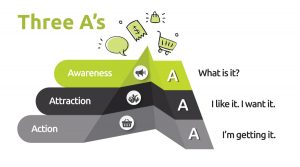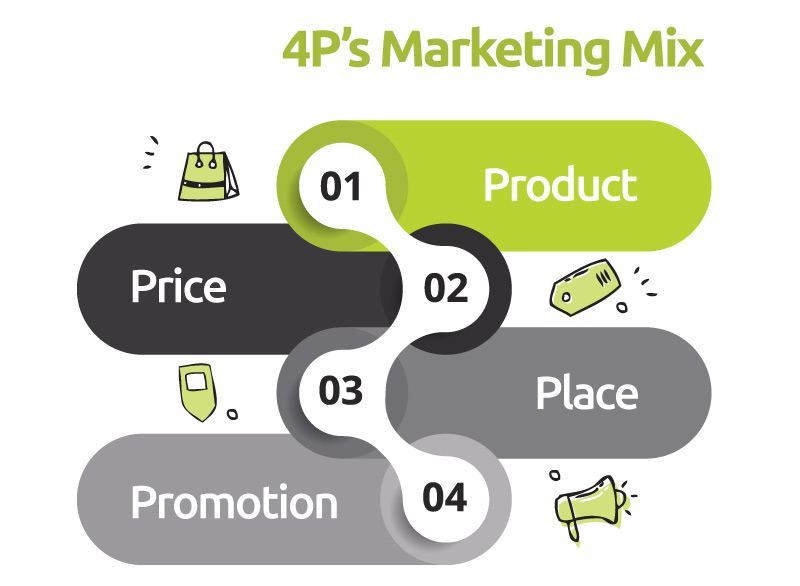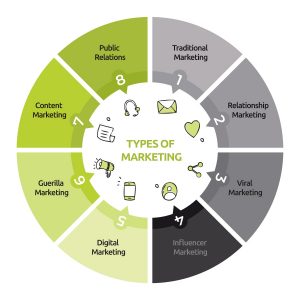Beginner’s Guide to Marketing: How to Easily Explain Marketing to a Child & Non-Marketer
How to Easily Explain Marketing to a Child
Having worked in marketing for over 30 years — I am often asked: “how can you explain marketing to a child or to a person who does not work in the marketing field?”
Short but sweet – it boils down the concept of marketing into the most basic of terms. It’s a very simple yet effective way to describe our industry to a child, and to any adult for that matter! It reminds me just why I love to do what I do for a living.
If the circus is coming to town and you paint a sign saying, “The Circus Is Coming to the Fairgrounds Sunday,” – that’s Advertising.
If you put the sign on an elephant’s back and parade him through town, – that’s a Promotion.
If the elephant walks through the mayor’s flower bed, – that’s Publicity.
If you can get the mayor to laugh about it, – that’s Public Relations.
And if you planned the whole darn thing, – that’s Marketing!
Pretty easy to understand right? In other words, marketing refers to a company utilizing various types of activities to promote their product or service to a specific audience. In the remainder of this article, we will continue to explain marketing to a non-marketer by covering:
Beginner’s Guide to Marketing
1. The Three A’s of Marketing
Awareness

If no one knows about your product or service, how will they ever buy from you? When marketing is done right, it will take your product or service and draw your ideal target audience to it. Let’s start with building brand awareness. Having brand awareness for your product or service builds trust and loyalty among your customers. For potential buyers to know your brand, you must create a strong brand identity, then use this identity in various types of marketing strategies which we will cover in section 3 below.
Attraction
Creating a strong brand presence so people have a positive interpretation of your product or service takes time. This is where you need to create a brand identity. Getting your ideal customer to want to purchase from you involves making sure your product or service helps them in some way. The vehicles to do this include:
- Creating a strong consistent brand presence (logo design, brand messaging, marketing collateral, signage, website)
- Having an easy to find, informative and engaging website
- Providing helpful resources and tools
- Getting referrals and strong testimonials
- Offering an excellent product and providing great customer service
Action
The last of the 3 A’s is getting your audience to do something. We refer this as “call-to-action”. The goal is to get your ideal customer to make the decision to purchase your product or interact with you. I also refer to this as “push” marketing, where your messaging is more direct where you are trying to drive your audience to a desired outcome. Here are some examples of what companies are trying to achieve:
- Collect newsletter signups
- Complete an online consultation or quote request form
- Calling the business to talk to a salesperson
- Make an online purchase
As you can see, building awareness by creating an attractive brand that gets customers to act will help your business grow. There are several other things you need to consider too. Read on to learn more.
2. The 4 P’s of Marketing
Let’s continue our marketing explanation by reviewing the 4 Ps of marketing also referred as the marketing mix. Introduced by Neil Borden in the 1950s, the marketing mix are the tactics that a business must use to promote their product or service to customers. The mix includes product, price, place and promotion and they must be applied together to achieve positive results.

Product
A product may be a hard good, a service offering, and idea or any combination of the three that a company offers to customers. It should be defined as a group of attributes such as features, benefits, and uses. Ideally a product should fulfill consumer demand.
Price
Price is what a consumer would have to pay to acquire the product or service. The price of a product is determined by the cost to create the product, its perceived value and how other competitors are pricing the same or similar product. The price of a product may be higher if the product is considered a luxury item. Or the price could be lower to appeal to a larger audience or to get consumers to try the product.
Product marketers need to consider offering discounts which usually draws in more sales, but it could give the impression that the product is not as luxurious, or less exclusive. Establishing the right product pricing is very important. If a consumer feels that spending money on your product or service will give them value, they will be happy to make a purchase.
Place
Place or distribution refers to product placement, getting the product in the right place at the right time. Customers need to know where to purchase the product or service. The goal of product marketers is to get the product to their target consumer, which are people most likely to buy them. This could mean placing products in specific retail or online stores or store displays. It can include product placement on TV shows, movies or getting them in the hands of social influencers.
Promotion
Promotion includes tactics that encourage short-term purchase to try the new product or service, such as coupons, rebates, special offers. It also includes advertising and public relations. The main goal of promotion is to tell the consumer why they need that product or service and get them to pay a certain price for it.
All the 4 Ps of marketing influence each other. When done right, it can bring great success to your business.
3. 8 Types of Marketing Strategies
Here are 8 marketing strategies that you could implement into your integrated marketing plan. Each strategy is very different and would appeal to a different audience. Understanding your target customer is key here. The type of marketing you choose will also depend on your marketing budget.

Traditional Marketing
Traditional marketing is a strategy to build awareness to consumers using print, radio, or TV advertisements. It’s a type of marketing that isn’t online and includes such tactics as outdoor advertising (signs, billboards, vehicle wraps, transit ads), direct mail, and ads in printed publications. Traditional marketing is very effective in reaching local audiences and give credibility to that company’s brand. Traditional marketing usually requires a larger marketing budget.
Relationship Marketing
This type of marketing strategy is targeting existing clients by emphasizing customer retention and satisfaction. The goal for relationship marketing is to build long-term relationships instead of short-term like a product sale from a grocery store. A customer may choose a certain product one time and may not remain loyal to that brand in the future. Relationship marketing work well for companies that offer services or sell direct to their customers. Relationship marketing tactics include:
- Networking
- Providing exceptional customer service
- Offering membership
- Proving free information to customers
- Loyalty rewards program
- Ongoing communication
- Special events
- Sending cards
Viral Marketing
Viral marketing happens when people are encouraged to share and pass along a marketing message about a product or service, so it spreads at an increased rate. This strategy uses social media networks that will reach consumers that ordinarily would not be targeted using traditional marketing campaigns. Viral marketing is very effective and can be less expensive.
Influencer Marketing
Influencer marketing is a newer form of marketing that has grown from the introduction of social media platforms. TikTok and Instagram is where it is the most popular. Influencer marketing focuses on using individuals who have a large social following, that match your target audience, by promoting your product or service to a larger market. For this type of marketing the company compensates the influential person (which can include employees, customer advocates, content creator and celebrities) to get the word out on their behalf. The influencer should be carefully hand-selected for the campaign for the best return on investment (ROI). To get the most out of this strategy, the campaign should resonate with the influencer’s audience which can be different that the company’s usual target audience.
Digital Marketing
Digital marketing is basically marketing online. It is the promotion of products or services using the internet. It is highly effective and easy to measure its success by viewing the online analytics. Digital marketing tactics include eblasts, social media marketing, and search engine marketing (such as Google AdWords, remarketing, display advertising).
Guerilla Marketing
Guerilla marketing is an unconventional publicity strategy where a company may surprise and interacts directly with consumers. This marketing strategy was introduced by Jay Conrad Levinson‘s 1984 book Guerrilla Marketing. The objective is to cause an emotional reaction so that the audience will remember that products in a different way than they would with traditional marketing. Examples of guerilla marketing tactics include sampling programs, costume mascot at events, creative billboards and vehicle wraps, graffiti artwork, flash mobs, and stickers in public spaces.
Content Marketing
Content marketing is a search engine website optimization tactic where you create valuable, relevant, and engaging website content with the right keywords to improve the visibility on search engines so your target audience can easily fine your product or services. This marketing strategy involves creative writing skills through storytelling, writing helpful blog articles and posting them on your company website. These articles should also be syndicated on social media. Better yet, composing stories and placing them on other relevant websites is very effective too.
Public Relations
Also referred to as PR, public relations focus on creating and maintaining a positive reputation for the company. Public relations do not promote products or services. Examples of public relations activities include media relations, advertorials, press releases, social media feel good stories, newsletters, business events, sponsorship and partnerships and speaking engagements.
Conclusion
I hope this marketing explanation for a child or non-market was helpful. Marketing is an important part of business, big or small, as it’s needed to build brand awareness and grow sales and revenue. If you are a new business venture, consider outsourcing this task to experienced marketers.




